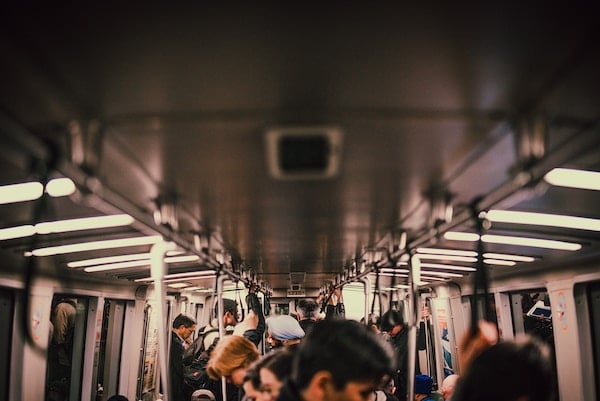Published on
Socioeconomic Status, Bias and the Role of Higher Education

This is an excerpt of Social Capital 2.0 by Rick Mask. Learn more about the book here.
One major and unfair detriment to social capital acquisition is a person’s socioeconomic position. Despite America being the “land of opportunity,” a lack of economic resources is as sure a way as any to keep a person from attaining a high position in society. The same walling off those raced and gendered spaces create, the same prevention from contact with social capital-vested individuals, is present when someone doesn’t have enough money.
Of course, upper- and lower-income groups travel in different circles. This begins with housing. Rich people live in more expensive homes in neighborhoods with high property values. Low-income families do not. Wealthy kids attend more expensive private schools and there they grow the social barriers which keep them apart from lower-income kids, for whom the same is true with public schools. Going to college can be a somewhat equalizing experience, as poor kids can make it to more expensive universities through athletic or academic merit, and upper-class kids might choose a cheaper university for several reasons.
However, by that point, young adults have mostly solidified their social attitudes regarding people of different socioeconomic distinctions into lifelong thought patterns and behavior tendencies—ways of thinking that are difficult to overcome. While some people can get over negative stereotypes, plenty cannot. Additionally, social barriers, which before were enforced by parental choices and other involuntary circumstances, become a fully artificial blockade to the pursuit of equal social capital flow. These are further enforced by superficial differences, like who can wear expensive clothes or go to high-end restaurants, which make non-practical situations skew heavily towards the well-off.
While this might, on the surface, appear like a milder prejudice which could create little more than differing political ideologies, that is a massive underestimation of the value of spending recreational time with someone in a power position. Getting drinks or going to a basketball game can overcome hours of hard work when it comes to building social capital. Connections built at a concert can endure quite a bit, and soporific PowerPoint presentations don’t help a person’s case nearly as quick as a few rounds of golf. Without the ability make connections like that, people with less money will always have a harder time dealing social capital, regardless of talent or personality.
In “Social Capital, Socioeconomic Status and Self-Efficacy,” Jing Han, Xiaoyuan Chu, Huicun Song and Yuan Li make the case that social capital is a tool for maximizing a person’s abilities; a modifier which could power middling workers to the top or chain exceptional employees to moderate success. Besides another robust attempt to quantify social capital—“SC = bo l5SES + lål6CV + e”—the researchers offer these insights as two of the results of their study: “(2) There is a significant positive correlation between the family socio-economic status as well as all its dimensions and self-efficacy; the socio-economic status, with its dimensions, is the predictive variable of self-efficacy… (4)Social capital plays a significant intermediate role between socio-economic status and self-efficacy, and the mediating effect size is about 51.75%.” In plainer language, where someone begins economically, specifically their immediate family’s surroundings, determines how successful they are later in life. This is true largely because social capital, which is closely tied to socioeconomic status, makes someone more effective in a competitive area, especially when it comes to making money. Social capital enables those who have it to achieve more, and hurts many who don’t possess it, stopping them from realizing their goals.
These are the most direct results of poor economic standing. Of course, the vast web of indirect effects of a poor upbringing is almost too large to contemplate, and sociologists spend careers trying to decipher the true causes of the problem. A lack of money is often strongly correlated to poor health, partially due to less-nutritious food, partially due to lower levels of medical care. The same goes for educational achievement, potentially because of absent parents, less engagement in extracurricular activities, or a carryover from health problems. Criminality is also an issue, as is drug abuse. Most of these problems are similarly reversed with a middle- to upper-class upbringing (although not in every case, of course), and they generally lead to social capital problems as well. Prejudice of nearly every sort exists against these conditions, and it acts to stunt relationships and slow the growth of trust.
Roots of U.S. Bias
It would be remiss to exclude the origins of socioeconomic bias in America. Certainly, this bias is common to most world cultures to a degree that other negative biases, such as ethnic prejudice, are not. The roots of this harmful outlook stem from early American ideals about class that sprung from British heritage. Imitating the social layering patterns of the aristocracy was natural behavior. The wealthy set social agendas and power brokered, and those with less scrambled to behave similarly. Powdered wigs and frock coats aside, money always means power, and the powerful set the tone for their contemporaries.
Even when the Brits fell out of favor with most people and ultimately fell or fled during the revolution, and the most “blatantly English” customs were unpopular, people who had land or other property they gained during British rule remained on top. As George Washington’s diary entries on physical etiquette when first meeting someone and Thomas Jefferson’s letters regarding cutlery placement at the dining room table prove, the founding fathers, until they decided to scribble down several “self-evident truths” were generally models of British gallantry. The conclusion of the American Revolutionary War at the colonies’ victory at Yorktown did not alter the class system in the newly formed United States immediately, and we are left dealing with the remnants of said system still.
These leftovers were the foundation of numerous toxic structural capital networks. People stuck with people based on elite memberships in institutions where entry was concerned largely with lineage. Parents passed down the best opportunities to the most accredited academic institutions or exclusive social clubs to their sons and daughters, and people without a family connection were shut out. The heart of elitism lays in family connections like this; where structural capital is a person’s birthright, as opposed to a system based on personal merit or serving the common good.
And elitism ties in perfectly to racism, socio-economic discrimination and discrimination based on gender. Members of the social aristocracy have protected their own for centuries, and, apart from schools and influential community institutions, this protection extended to major businesses and titans of industry that shaped the American economy. Having money or at least a “proper upbringing” gave someone the access points for building social capital with people who counted. It provided another barrier for those who did not.
Bias manifests in a variety of different ways. The founders would most likely agree that a lack of higher education works against someone. Whether it’s a job interview, a date or simple conversion with someone you’ve just met, lacking advanced education can be a significant detriment to a person’s opportunities to make personal connections and cultivate social capital.
Understanding Educational Bias
Socioeconomic biases have similar carryovers to bias based on educational status as well. Many employers will regard degrees in much higher esteem than what is reasonable compared to experience and aptitude. A person’s ability to perform their job adequately is certainly difficult to assess before they begin working and focusing on education can provide a shortcut to estimating their quality. However, that focus often leads to an unfair degree of favoritism. People who can’t boast advanced instruction get left behind.
In “Social Capital in Action: Alignment of Parental Support in Adolescents’ Transition to Postsecondary Education,” Doo Whan Kim and Barbara Schneider explore the connection between parents’ social capital and their children’s acceptance into selective higher-education institutions. “Through actions that are functionally specific to (an) adolescent’s goal of gaining admission to college, parents can provide a bridge to resources and information outside the family that enable the adolescent to make a more informed choice of college; such actions reflect parents’ dynamic role as social resources for their children. In particular, we pay attention to different social support options that parents can activate for their adolescents depending on their socioeconomic status.” Essentially, a parent’s job becomes much more difficult and their options greatly limited if they don’t have enough money to provide their kid with resources to succeed and make it into a good college. Parents must be very involved in their children’s lives to make up for the lack of resources elsewhere. However, that is not always possible, and even if it is, children are stuck in a space without access to bridging social capital opportunities.
Caregivers without money, resources, or helpful connections need to make up for that with personal contributions of time. This helps build close familial ties, strengthening relational capital, and, according to several major scholars you will discover later on, powerful family bonds can approach the strength of a more professional and traditional work network, at least when it comes to the issue of support. Kim and Schneider again: “Academic help, proper guidance for school programs and information about the college admissions process, and institutional agents in the school can provide strong network ties that compensate for family networks when students’ parents have limited economic and social resources. A positive social relationship between parents/children and these resource providers becomes important in expanding the scope of available resources to secure better educational and occupational opportunities later in life.”
However, despite the potential lower-income families have to equalize the potential relational and cognitive capital gains that money can provide, structural capital remains centered to benefit a relatively small group of people, many of whom have close relational ties as well. The foundations of major social and business institutions are tied to specific groups, and everyone else has to manage that disadvantage when they are working for social capital. Unfortunately for the well-educated, and others who have risen to levels of academic distinction, there are certain competitive sectors where hard-won traits actually hold people back, and these areas compose significant impediments to certain people’s advancement in life.
This is an excerpt of Social Capital 2.0 by Rick Mask. Learn more about the book here.
Author Perspective: Administrator



